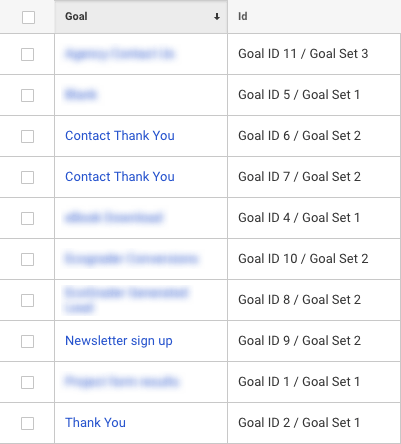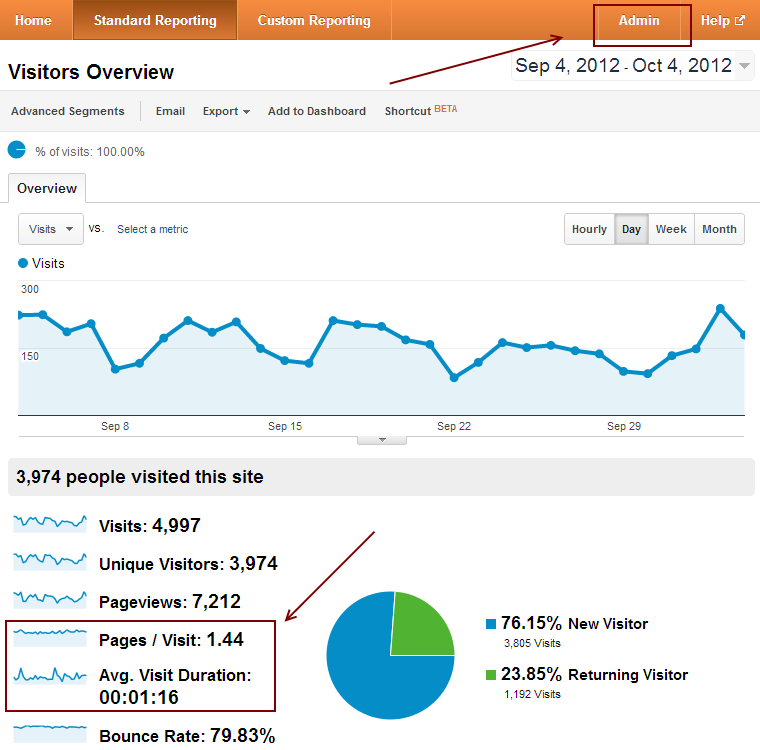What Data Is Google Analytics Goals Unable to Track: A Full Guide
What Data Is Google Analytics Goals Unable to Track: A Full Guide
Blog Article
Discover the Limitations of Google Analytics Goals: Revealing the Data Types That Remain Untrackable
As businesses increasingly count on data-driven decision-making, understanding the constraints of devices like Google Analytics comes to be vital. While Google Analytics Goals deal beneficial understandings right into customer communications, there exist data kinds that thwart tracking, positioning obstacles to a detailed understanding of user actions. These untrackable information types question about the accuracy and efficiency of the analytics data that companies greatly trust for their electronic strategies. Curious to uncover the concealed blind areas in your information evaluation process?
Incomplete Customer Trip Tracking
Insufficient customer journey monitoring within Google Analytics can hinder the capacity to precisely assess user actions. When the user trip is not completely tracked, there are spaces in the information that protect against an extensive understanding of how users communicate with an internet site. This absence of understanding can bring about missed out on opportunities for optimization and renovations to the individual experience.
One usual issue with incomplete user trip tracking is the lack of ability to see the complete path that customers take in the past finishing a goal or leaving the website. Without this details, it is testing to determine where individuals may be experiencing barriers or rubbing factors that prevent them from converting. Furthermore, insufficient tracking can cover the influence of certain marketing efforts or site modifications on customer actions.
To address this constraint, it is vital to establish proper monitoring mechanisms within Google Analytics to capture the whole user journey. This may include establishing occasion monitoring, objective funnels, or utilizing tools like Google Tag Manager to make sure that no vital communications go unrecorded. By getting a thorough sight of the customer trip, website owners can make more informed choices to boost customer interaction and drive conversions.
Acknowledgment Obstacles
Navigating through attribution challenges in Google Analytics requires a detailed understanding of how various touchpoints contribute to the total conversion procedure. Attribution obstacles occur from the intricacy of modern customer trips, where individuals interact with numerous channels prior to converting. Google Analytics gives different attribution models like very first touch, last touch, and linear, each offering a various perspective on exactly how credit report is appointed to touchpoints along the conversion course. However, these models might not always properly show the true influence of each touchpoint on the conversion.
One typical acknowledgment obstacle is the trouble in associating conversions to the correct resource, particularly in cases where users connect with numerous networks prior to converting. This can bring about errors in figuring out which advertising and marketing efforts are driving the most conversions. In addition, cross-device monitoring presents one more attribution obstacle, as individuals often change in between devices throughout their journey, making it challenging to track their interactions perfectly. Online marketers should carefully analyze and evaluate attribution data to make enlightened decisions and optimize their advertising and marketing methods properly.
Offline Conversions
Offered the challenges associated with associating conversions properly in online channels, the measurement of offline conversions presents a significant opportunity for marketers seeking an extra extensive understanding of their clients' trip. Offline conversions refer to activities that customers absorb the physical globe, such as making acquisitions in brick-and-mortar shops or over the phone, attending occasions, or engaging with printed products - what data is google analytics goals unable to track. These conversions are vital for services that run both online and offline, as they provide important understandings right into the efficiency of advertising projects throughout different touchpoints
Tracking offline conversions commonly presented a significant challenge for marketing professionals, as it was challenging to attach these activities back to specific on-line interactions properly. With developments in modern technology, such as the integration of CRM systems, one-of-a-kind identifiers, and coupon codes, organizations can currently link the space in between online and offline information to acquire a much more alternative view of client behavior. By effectively determining offline conversions, marketers can optimize their strategies, assign resources a lot more successfully, and ultimately boost the overall customer experience.
Cross-Device Tracking
Cross-device tracking plays a critical function in understanding the interconnected nature of consumers' digital communications across numerous devices. In today's omnichannel world, where users perfectly change between desktops, tablets, and smart devices, tracking their habits throughout read the article these gadgets is vital for marketing experts to get a comprehensive view of their customer trip.

Additionally, privacy worries and laws such as GDPR and CCPA have further difficult cross-device monitoring. With users requiring more control over their data and boosted constraints on monitoring technologies, marketers have to find privacy-compliant and ingenious means to connect customer communications throughout devices.
Dynamic Content Interaction
Recognizing individual interaction with vibrant content is critical in maximizing digital advertising strategies for improved target market interaction. Dynamic web content refers to internet site components that transform based on individual habits, preferences, or various other factors, using a personalized experience. Nonetheless, tracking customer communications with dynamic web content positions difficulties for traditional analytics devices like Google Analytics.
While Google Analytics can track basic communications like clicks and page sights, it might battle to catch even more nuanced involvements within dynamic content. what data is google analytics goals unable to track. Metrics such as time invested on specific dynamic aspects, float activities, or interactions within pop-ups are typically not quickly measurable using typical tracking methods. This constraint impedes online marketers' capability to fully realize exactly how users are engaging with dynamic web content and customize their approaches appropriately

Final Thought
In final thought, Google Analytics go to my blog goals have restrictions in tracking insufficient individual journeys, connecting conversions accurately, catching offline conversions, tracking cross-device communications, and gauging dynamic material engagement. These restrictions highlight the importance of discovering additional monitoring methods and tools to get an extra comprehensive understanding of user habits and conversions past what Google Analytics can give.
While Google Analytics Goals offer valuable insights right into user interactions, there exist data kinds that avoid monitoring, presenting obstacles to a thorough understanding of individual habits.Incomplete user trip monitoring within Google Analytics can hinder the capacity to precisely examine user habits. When the individual journey is not totally tracked, there are spaces in the information that prevent a thorough understanding of how customers engage with a site.One typical issue with insufficient individual trip monitoring is the inability to see the full course that customers take before finishing an objective or leaving the website. By getting a comprehensive view of the user journey, internet site proprietors can make even more enlightened decisions to improve user interaction and drive conversions.
Report this page